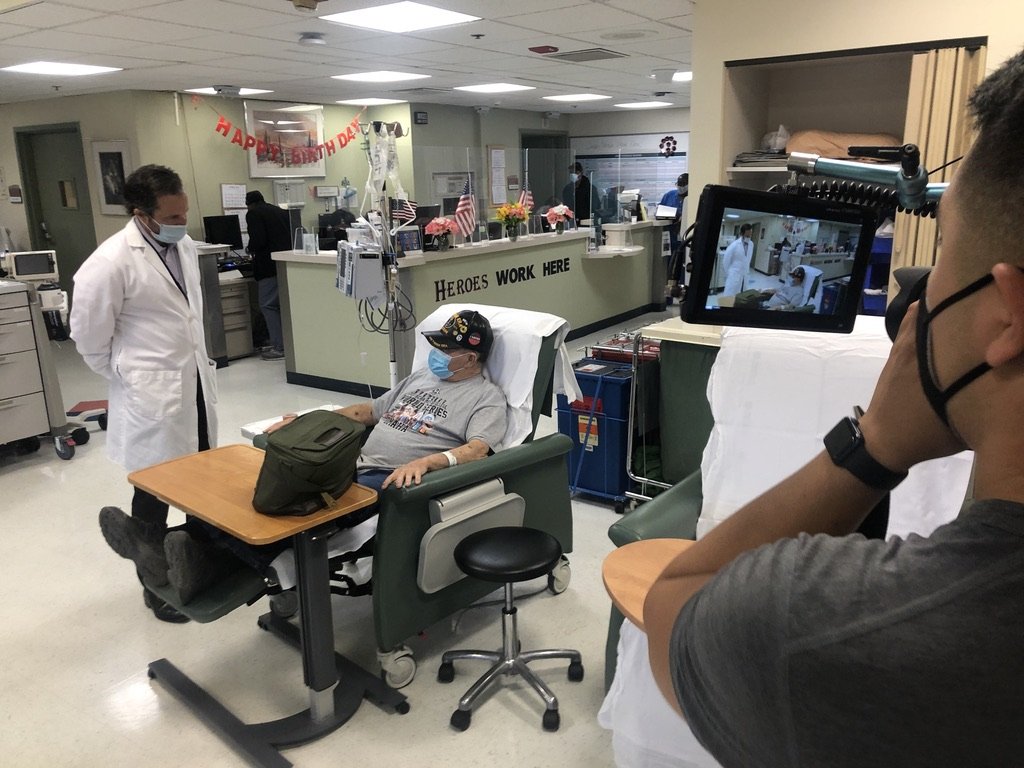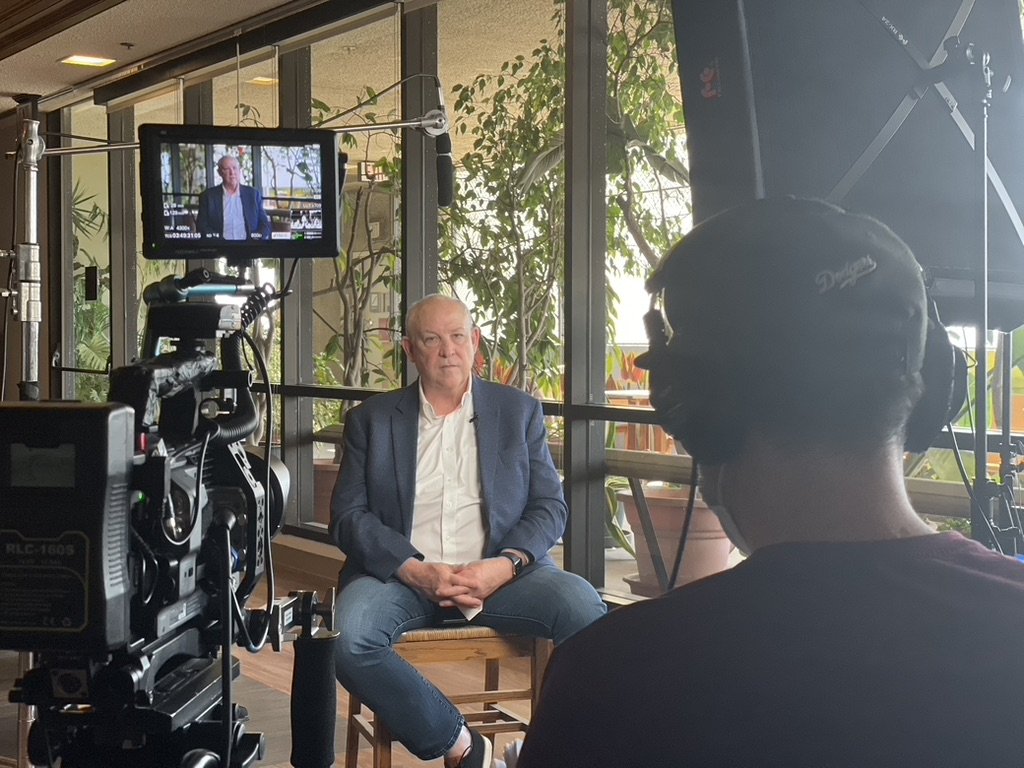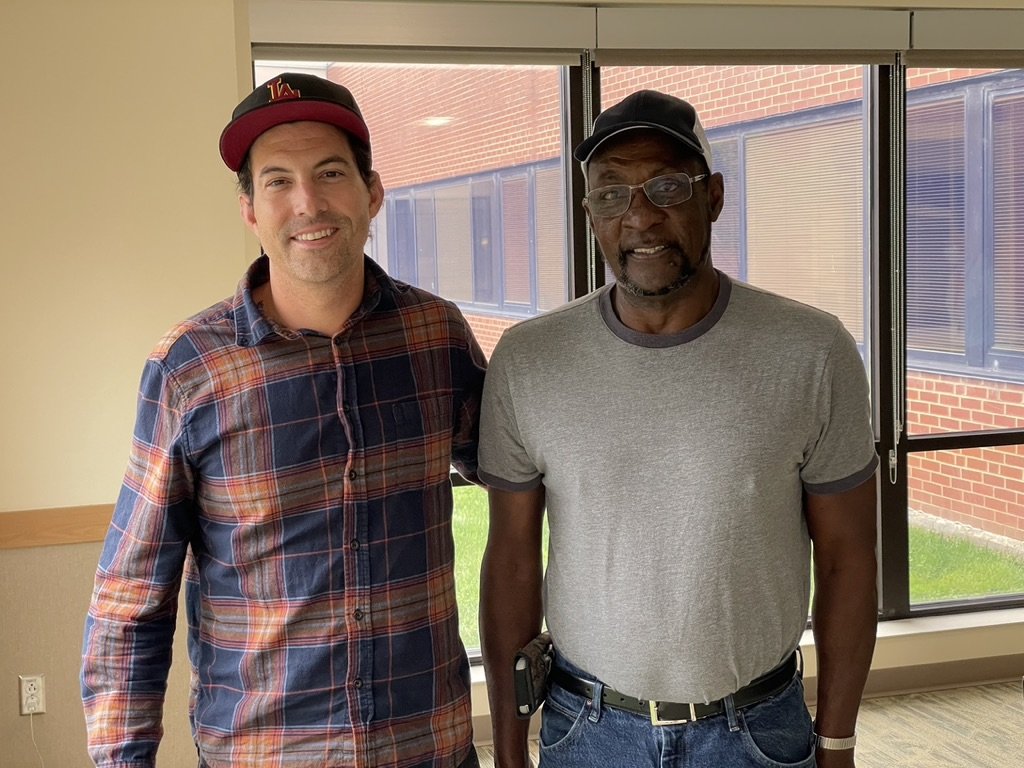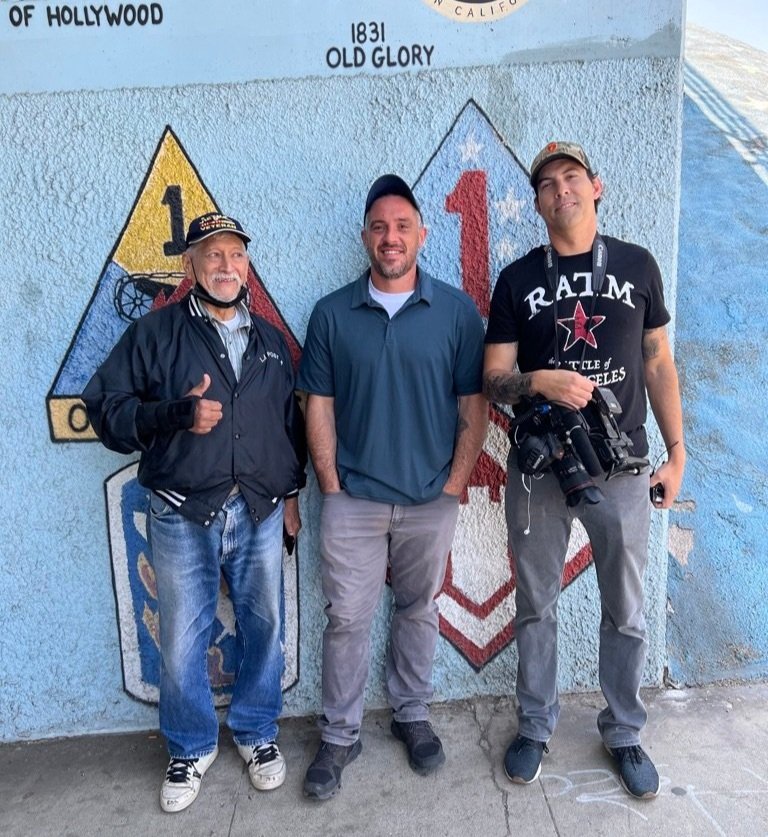Welcome back to my blog and thanks for continuing to support my work! My last post The Good, Bad, Ugly, and Beautiful of the Veteran's Health Administration - Part 1 was an exploration of some of the toxic experiences I’ve had with the V.A. In this post I’ll share some positive aspects of the V.A. that I’ve seen while directing close to 100 videos for the Veteran’s Health Administration, will offer my thoughts on the future and how we can come together as a country to help the V.A. live up to it’s great mission.
Veterans have a lot of feelings associated with V.A. healthcare and oftentimes I hear from them how horrible it is and sadly too many of their stories are true. George Washington was once attributed as saying “The willingness with which our young people are likely to serve in any war, no matter how justified, shall be directly proportional to how they perceive the Veterans of earlier wars were treated and appreciated by their nation.” Whether President Washington actually said that or not, it entirely holds truth. If we can’t take care of our returning Veterans not only is that a great moral injustice but it also sends a negative message to those who may want to defend our nation in the future. Veteran’s issues should be one of the most unifying ideals in our country and it transcends party lines. As you read this post, take a few minutes to watch some of the short stories about the V.A. I directed along with the great team at Gig Line Media.
Abraham Lincoln understood all too well the importance of taking care of Veterans.
William Clevenger and I, a fellow 25th Infantry combat camera infantry soldier and cancer patient at the V.A., 2021.
Choose V.A. - Dr. Richard Stone talks about why Veterans should come to the VHA.
Interviewing Richard Stone the Former Acting Under Secretary for Health VHA, 2021.
Filming at the West Los Angeles V.A., standing in between the two units I served with, 2021.
Filming in the torn down Wadsworth Chapel with Los Angeles faith leaders, 2023.
75 Videos for 75 Years of the VHA
In 2021 I was hired by Gig Line Media to direct 75 short documentaries as part of their 75th anniversary celebration. Our team traveled to some of the highest rated V.A. systems in the country to find great stories about a variety of V.A. topics, innovations, executives, doctors, nurses, facilities and programs. After having some really traumatic and infuriating engagements with the V.A., as I mention in my previous post, seeing some of the positive gave me some hope and helped me think deeper about the ways in which we can fix what is not working. As a great example of a positive story watch our Emmy nominated piece A Vet’s Life Rebuilt talking about the world-renown Richmond Polytrauma Rehabilitation Center at the Richmond, Virginia V.A.
Navy Veteran Jaret Yohman with his father and step-mom continuing his recovery from falling down a mountain, 2021.
A Vet’s Life Rebuilt - 2021 Emmy Nominated short documentary.
Interviewing the Yohman family at the Richmond, Virginia V.A, 2021.
Each V.A. an Island Unto Themselves
Understanding the way the V.A. works can be really complicated and I learn something new about it almost everyday. Many people have asked me, “Why is there such a disparity in services at the V.A.” and “Why can one hospital be so poorly mismanaged and another is ‘world-renowned’?” These are complex questions but I have a few opinions, based solely on my own experiences. The V.A. is broken down into regions known as Veterans Integrated Services Networks (VISNs), and these regions are often quite large. The VISN leaders have so many hospitals to oversee, sometimes lots of things can get overlooked including toxic leaders, incompetence, negligence or even criminality. I believe this is the reason why the scandal at the Roseburg V.A. was allowed to go on for so long, local executives were able to hide from the accountability at the VISN and federal levels. On the flip side there are some V.A. systems that have Executives that lead their staff with professionalism, competence, hard work and compassion. I don’t really have many answers by way of federal policy changes, there are much smarter people that have thoughts on that. Overall I’ve found the more a community, the media, and it’s political leaders are engaged at their local V.A. the better we can all stay informed on what’s happening and hold these hospitals accountable.
Interviewing Dr. Patricia Crawford, Chief Nurse of Mental Health and Air Force Veteran at Washington D.C. V.A., 2021.
Interviewing anesthesiologist Rajika Tobey for a short story about Stellate Ganglion Block, at Long Beach V.A., 2021.
A short doc about Stellate Ganglion block, an innovative treatment for PTSD.
Filming nurses with Veteran patients at the West Los Angeles V.A., 2021.
Interviewing Ed Purcell, Marine Veteran and Seth Hills, rehab engineer at the Richmond, Virginia, V.A., 2021.
Where the V.A. is Winning
As I visited the various V.A.’s and realized that each one is its own world, I found many have medical specialties that are unique, distinguished and excellent for Veterans. As an example the Long Beach V.A. has several innovative programs that started there and are spreading throughout the V.A. One program is called the Veterans Mental Evaluation Team, or VMETs. The VMETs are a pair of veterans, one that works in law enforcement and one is a mental health specialist. Their job is to react to veterans in crisis, to calm situations and help the troubled veteran get help before actual law-enforcement is involved, watch the video below. Another amazing program at Long Beach V.A. is their Biomedical Exoskeleton program that is literally helping quadriplegic veterans walk, take a look at that story below.
The Palo Alto V.A. system is another example of a hospital with some innovative mental health programs that have been saving Veterans lives through various therapies such as art, photography, K-9, aquatic, kayak, equine, cycling and music. There are a few of the stories linked below.
Short story about the innovative Veterans Mental Evaluation Team at the Long Beach V.A.
Filming the Veteran Mental Evaluation Team at the Long Beach V.A., 2021.
Filming Veterans Shannon Teague and Cpl. T-Bone Anderson helping Army Veteran Larry Nelson, 2021.
Interviewing Marine Veteran Jose Reynoso at the Long Beach V.A., 2021.
Quadriplegic Marine Veteran Jose Reynoso walking with the Exoskeleton at Long Beach, V.A., 2021.
Short Documentary about the amazing Exoskeleton at the Long Beach V.A.
Army Veteran Eric Ontiveros tells his story about how Cycling changed his life at the Palo Alto V.A.
Hanging with Army Veteran Eric Ontiveros as he talks about how Cycling helps him with his PTSD, 2021.
Filming a story about Army Veteran Victor Patterson former drummer for Tower of Power, tells his story as a drug addicted and homeless vet to recovery through the V.A. at Palo Alto, 2021.
A short documentary about Music Therapy at the Palo Alto, V.A.
The V.A. and University Partners
A huge advantage that the V.A. has over other hospital systems in the U.S. is that many of the hospitals have University partners. Some examples of university partners are the Palo Alto V.A. with Stanford University, West Los Angeles V.A. and UCLA, the Durham, North Carolina V.A. and Duke University and there are literally dozens more throughout the U.S. These Universities can work hand in hand with the V.A. and provide top tier doctors, residencies and executives that can perform duties at both institutions. For a government run healthcare system that has many price limitations on how they can pay their staff, this is an exceptional tool for Veterans. As an example, although the West Los Angeles V.A. has had (and continues to have, read below) a variety of scandals, they also have one of the best programs and doctors for Colon Cancer for Veterans with Dr. Matt Rettig; a leading Oncologist at UCLA, see his story below.
Filming Navy Veteran and Cancer survivor Michael Crosby at the West Los Angeles V.A., 2021.
Filming medical oncologist Dr. Matt Rettig as he visits with his Veteran patients, at the West L.A. V.A., 2021.
A short documentary about some of the innovative approaches to cancer at the V.A.
Dr. Matt Rettig explaining Precision Oncology at the West Los Angeles V.A., 2021.
Interviewing Navy Veteran and Cancer survivor Michael Crosby at the West Los Angeles V.A., 2021.
Filming Veteran patients at the West Los Angeles V.A., 2021.
Cancer Care in the VA
Cancer is the third highest killer of Veterans and there are many cancer programs that the V.A. has that works just as good, if not better than some areas of the private sector. One reason is because the V.A. is the largest integrated healthcare system in the U.S. which allows a patient’s data, and care to be shared within the whole network. The reason this is important is because when you’re trying to find a particular solution to a specific cancer it’s helpful to have access to as many similar cases as possible to see what worked and what didn’t. Additionally because there are several different types of cancers that plague Veterans specifically, the V.A. has been able to learn and grow in their treatment solutions. Lastly, if a veteran moves or needs to get treatment or advisement through the V.A.s tele-health system, doctors can easily access a Veteran’s health chart.
After I directed 75 videos for the V.A. in 2021 I directed a group of six Cancer healthcare videos for the V.A., and I saw firsthand remarkable innovations helping Veterans fight their cancers. One of the immense ironies in my life was I had to also walk Melanie, my late-wife, through her cancer journey at Cedars-Sinai in Beverly Hills while I was filming these V.A. cancer videos. I never thought I would be this immersed in the world of cancer. I have a great passion for those who work in Oncology and there are some amazing options for Veterans in the V.A. system. That being said, one should always do what is best for their own journey. Check out a few of the videos we did about Cancer Care in the V.A.
A short documentary about innovations in Lung Cancer care at the Long Beach, V.A.
Vietnam Veteran Bill Clevenger showing photos he took as a Combat Cameraman with the 25th Infantry, 2021.
Interviewing Air Force Veteran and cancer survivor Denise Baptiste, Durham, NC V.A., 2022.
Filming Navy Veteran Paul Macko’s story about his fight with cancer at the Hines, Chicago, IL V.A., 2022.
Navy Veteran Paul Macko shares his journey about how the V.A. has helped him in his cancer fight.
Filming Monica and Vietnam Veteran Eric Jones as they tell their cancer journey, Philadelphia, PA, V.A., 2022.
Army Veteran Bernard Dorsey tells his story about early detection for Cancer at the Durham, N.C. V.A.
A short documentary about Vietnam Veteran Eric Jones and his cancer journey at the V.A. in Philadelphia.
The Ongoing Crisis and Lawsuit at the West L.A. V.A.
Now that I’ve shared a lot of the positives I’ve seen in the V.A. system I’d like to revisit a story that is still ongoing here in Los Angeles. As I shared in my first post, the West Los Angeles V.A. campus was originally given to Soldiers’ in 1887 for not just healthcare but as a home. There has been so much scandal, neglect and outright hostile disregard by much of the West Los Angeles V.A. and the surrounding Los Angeles communities that the campus has dissolved to having barely any housing for veterans and is primarily just a healthcare system. Read/watch a great CNN story here that shares some of the ongoing story. Some good news, fortunately the V.A. has teamed up with some major construction contractors who are starting to renovate a handful of these old buildings and have started housing some Veterans. The process is quite slow and often times the V.A. bureaucracy blocks many deserving Veterans from getting housing. All of these delays, bureaucratic red tape and the continued abuse of the land by Breitburn Oil Company, UCLA and their baseball field, and Brentwood High School amongst many other entities has now led to a major lawsuit on behalf of homeless Veterans suing the V.A. in order to change things.
Mike Dowling and I after filming our 1887 film in the Wadsworth Chapel at the West Los Angeles, V.A. 2018.
Filming at the homeless encmapments on the West Los Angeles V.A. campus, 2021.
Filming a small Veterans protest at the West Los Angeles V.A. with fellow 25th Infantry Veteran, 2022.
Me filming at the Wadsworth Chapel at the West Los Angeles V.A., 2023. Nothing has changed, yet…
Me with Vietnam Veteran and advocate Jay Morales, and Iraq Veteran Rob Reynolds at the West L.A. V.A., 2022.
Filming at groundbreaking ceremony at the West Los Angeles V.A., 2023.
Groundbreaking ceremony at the West Los Angeles V.A., 2023.
What can we do?
As Veterans we often hear “Thank you for your service,” and in some ways it’s greatly appreciated but in other ways it can be a reminder of all the troubling circumstances Veterans in America find themselves in; struggling with PTSD, the suicide epidemic, traumatic brain injuries and a host of other disabilities, anxiety, anger, unemployment and trouble navigating the V.A. system amongst other issues. So, what can the average non-veteran do to help? Here are a few suggestions for how all of us can get involved.
First, listen to Veterans and their stories. Like all of us, Veterans have stories they want to share. Listening without judgment helps slowly heal some of the inner demons they may be fighting.
Get involved in your local V.A. There are ways your local volunteer groups, churches or non-profits can find avenues for helping. One of the things that I heard often from the older Veterans who were alone at the hospitals for months and months during Covid was how lonely they were.
Stay informed. Know what is going on at your local V.A. When scandals happen, elevate them to your Congress people and Senators. If we put pressure on local executives to do the right thing, they have to.
Be a better human. One thing I hear from many veterans, particularly combat veterans, is “why did I even fight over there if we’re all going to be so horrible to each other here at home.” This resonates with me deeply. I know there are many issues we all disagree about but there is something much larger at stake. Remember what it felt like on 9/12 2001? And if you are too young, let me remind you. We felt like a unified country. A country with a purpose. A country with a passion for justice. A country that looked at each other not with spite and bitterness but with sorrow and resolve. I’m sad to say I don’t think we’re living up to that resolve, but it’s never too late to change.
The vision for the 388 acres at the West Los Angeles V.A. is not only a place to give Veterans healthcare but something far better, a place to call their own. Many Veterans feel disconnected from society and in order to heal they need a space to do that. The V.A. should be a place where Veterans can get housing, help with employment, mental health, camaraderie, and also healthcare, amongst many other needs.
Below are some pictures of myself with the 1887 fund showing faith leaders in the Los Angeles area the rundown Wadsworth Chapel in hopes we can raise awareness and the money to bring the chapel back to life to be a space for non-denominational spiritual healing for Veterans.
Thanks for reading!
P.S. There was no A.I. used in the writing of this post haha ;)
The oldest building on Wilshire Blvd, the Wadsworth Chapel built in 1900, 2023.
Christine Barrie, the heir of the family that deeded the L.A. V.A. property to Veterans in 1887, 2023.
Interested parties looking at the plans to restore the Chapel, 2023.
The chapel has been left in complete disarray by the V.A., 2023.
Filming in the Wadsworth Chapel, 2023.
The plan to fix the L.A. V.A. campus. 2023.









































